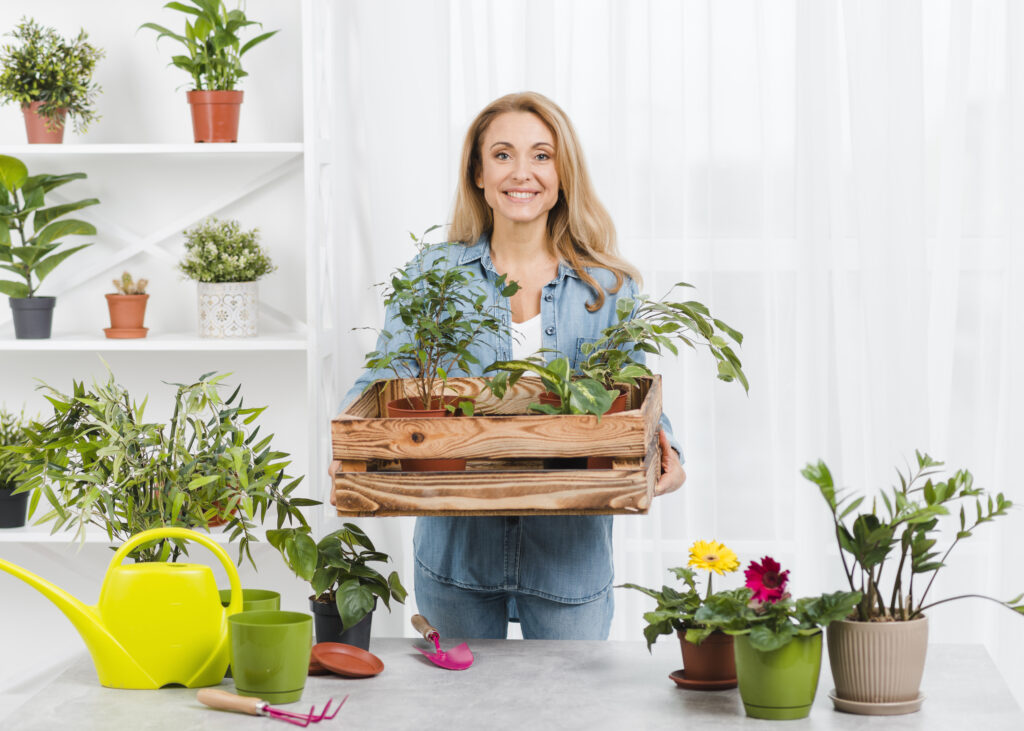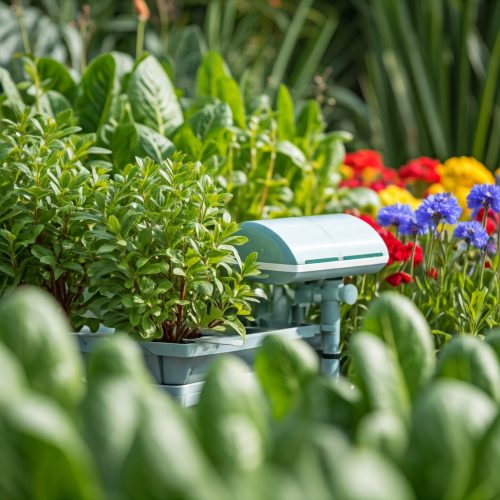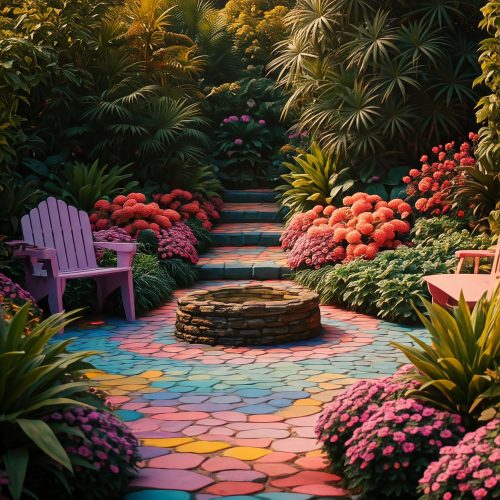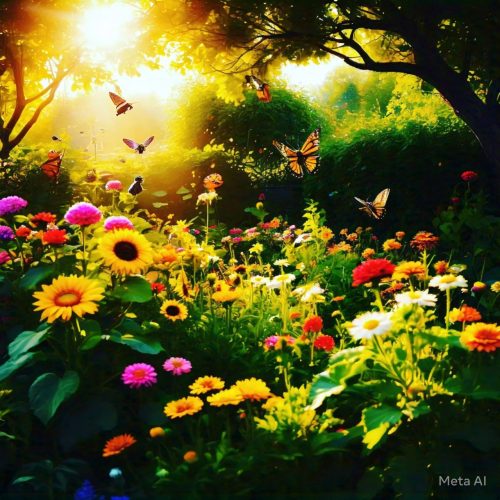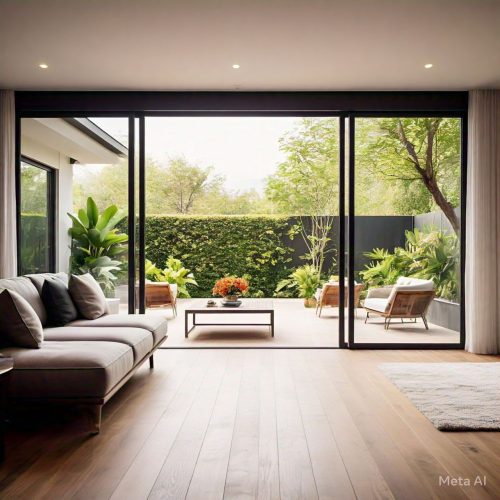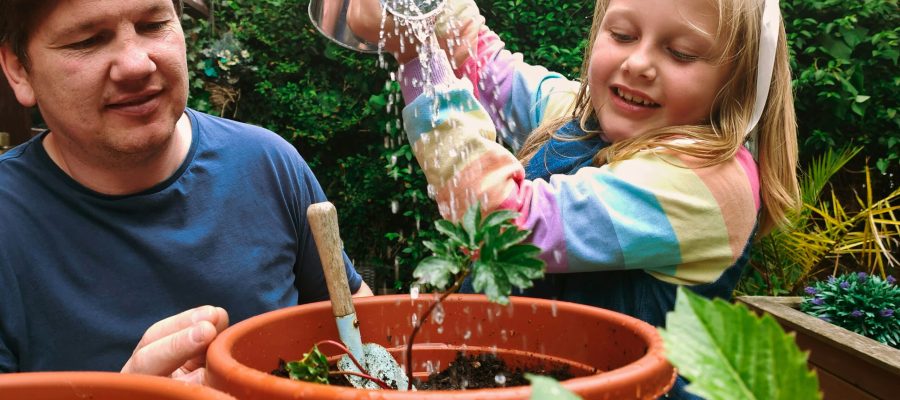
Gardening is a wonderful way to bring nature into your home while creating a relaxing and rewarding hobby. Whether you’re dreaming of homegrown vegetables, fragrant herbs, or vibrant flowers, starting a garden doesn’t have to be overwhelming. This guide to gardening for beginners will walk you through the basics, from choosing the right space and plants to maintaining your garden for long-term success.
Assess Your Space
The first step to gardening for beginners is to evaluate the space you have available. This will help you determine what kinds of plants you can grow and how to organize your garden.
Understanding Your Area
-
Size and Layout
Measure the space where you plan to garden. This could be a balcony, backyard, terrace, or even a windowsill. Small spaces work well for container gardening or vertical gardening.
-
Full Sun: 6+ hours of sunlight daily.
-
Partial Shade: 3-6 hours of sunlight.
-
Full Shade: Less than 3 hours of sunlight.
-
-
Sunlight
Observe how much direct sunlight your space receives during the day. Most plants require at least 4-6 hours of sunlight, but some thrive in partial shade or indirect light. -
Drainage and Weight
Ensure there’s proper drainage to avoid waterlogging. If you’re gardening on a balcony or terrace, make sure the structure can handle the weight of pots, soil, and water
Decide What to Plant
Choosing the right plants is one of the most exciting parts of gardening for beginners. Start with plants that are easy to grow and match your space’s conditions.
Vegetables
Growing your own vegetables is both satisfying and practical. For beginners, the easiest vegetables to grow include:
- Leafy Greens: Spinach, lettuce, fenugreek and coriander.
- Root Vegetables: Radishes, carrots, ginger and turmeric.
- Others: Cherry tomatoes, green chilies, curry leaves, mint, peas, okra and dwarf brinjal.
Herbs
Herbs are a great choice for small spaces and require minimal care. Consider:
- Sun-Loving Herbs: Basil, thyme, oregano and lemongrass.
- Shade-Tolerant Herbs: Mint, coriander, parsley, curry leaves and fenugreek.
Flowers
Flowers can add color and attract beneficial insects like bees. Start with:
- Annuals: Marigold, petunia, and zinnia.
- Perennials: Roses, hibiscus, bougainvillea and jasmine.
Low-maintenance Plants
If you have limited time, choose hardy plants like succulents, snake plants, or pothos that thrive with minimal care.
Soil Preparation
Healthy soil is the foundation of any thriving garden. The right soil mix will ensure your plants have access to the nutrients they need.
Choosing the Right Soil
- Use a light, well-draining potting mix for containers.
- Soil should be slightly acidic to neutral (pH 6-7) for most plants. This can be measured using soil pH test kits or a digital pH meter.
- Add organic matter, such as compost or manure, to enrich the soil. This can be sourced from local gardening stores, online vendors or you can simply create compost at home using kitchen scraps (vegetable peels, fruit rinds, eggshells) and garden waste like dry leaves.
How to Prepare the Soil
- DIY Potting Mix: Combine garden soil, compost, and cocopeat in equal parts.
- Improve Drainage: Add sand or perlite to prevent water from pooling.
- Compost: Start a small compost bin for kitchen scraps like fruit peels and vegetable waste to create your own fertilizer. To avoid smell, keep the compost bin covered and in a ventilated area.Turn the compost regularly (aeration is key) and avoid putting certain items such as meat and dairy products.
Essential Gardening Tools
Investing in a few basic tools will make gardening much easier:
- Hand trowel for digging and planting.
- Pruning shears for trimming plants.
- Gardening gloves to protect your hands.
- Watering can or spray bottle for irrigation.
- A small rake for loosening soil
For more information about gardening tools, head over to our blog post dedicated to it: Home Gardening Tools
Choosing the Right Plants & Containers
Annuals vs. Perennials
- Annuals: These plants complete their life cycle in one season. They’re perfect if you want quick results (e.g. sunflowers, marigolds, cherry tomatoes, spinach, etc).
- Perennials: These live for several years and are great for long-term gardening (e.g. curry leaves, jasmine, aloe vera, mint, roses, etc).
Selecting Containers
- Material: Terracotta and ceramic pots are breathable and sturdy, while plastic pots are lightweight and budget-friendly.
- Size: Choose deeper pots for root vegetables and smaller ones for herbs.
- Drainage: Ensure containers have drainage holes to prevent overwatering.
Designing Your Garden Layout
A well-thought-out garden layout makes the most of your space and helps plants thrive.
Companion Planting
Pair plants that benefit each other: (more companion planting)
- Tomatoes + Basil or Fenugreek: Basil helps repel pests and enhances the flavor of tomatoes.
- Beans + Cucumbers: Beans fix nitrogen in the soil, which cucumbers need.
- Marigolds + Vegetables: Marigolds act as natural pest repellents.
- Chilies + Coriande: Chilies deter pests like aphids, while coriander attracts beneficial insects such as pollinators.
- Garlic + Roses: Garlic repels aphids and other pests that attack roses, while roses do not compete for nutrients with garlic.
Vertical Gardening
Use trellises, shelves, or wall-mounted planters for climbing plants like beans and cucumbers to save space.
Planting Tips
Seeds or Transplants?
- Seeds: Cost-effective and ideal for fast-growing plants like herbs and leafy greens.
- Transplants: Easier for beginners and quicker to harvest for vegetables like tomatoes.
Planting Rules
- Sow seeds at a depth that’s twice their diameter.
- Maintain enough spacing between plants to avoid overcrowding.
- Water gently after planting to help the soil settle.
Where to Source Materials
You can find everything you need to start gardening at:
- Nurseries: Visit local garden centers for seeds, pots, and plants.
- Online Stores: Many websites sell gardening supplies and deliver them to your home, e.g. Krishi Vigyan Kendra (KVK) Centers, Amazon / Flipkart, Ugaoo, etc.
- DIY Options: Make your own compost or repurpose containers for planting.
- Many state agricultural universities sell seeds directly through Agricultural Universities and Fairs
Maintaining Your Garden
Keeping your garden healthy requires consistent care, but it doesn’t have to be time-consuming.
Watering
- Water plants early in the morning or late in the afternoon to minimize evaporation.
- Use a watering can for even distribution, or consider drip irrigation for efficient watering.
Fertilizing
- Apply organic fertilizers, like compost or liquid fertilizers, every 2-4 weeks. Here’s how to choose fertilizers:
- General Use: Vermicompost, cow dung manure, or compost (available locally or online).
- Leafy Greens (Nitrogen): Panchagavya, liquid compost tea, or neem cake powder.
- Fruiting/Flowering Plants (Phosphorus/Potassium): Banana peel fertilizer, or wood ash.
- Soil Health: Biofertilizers like azospirillum or mycorrhizae from agricultural centers.
- Avoid over-fertilizing, as it can damage the plants.
-
Solid Fertilizers:
-
Compost: 1–2 handfuls per pot every 2–4 weeks.
-
Neem cake: 1 tsp for small pots, 1 tbsp for large pots monthly.
-
-
-
-
Liquid Fertilizers:
- Dilute 1:10 (fertilizer:water); apply 200 ml per pot every 2 weeks.
-
-
-
Avoid Overuse:
- Start with small doses.
-
-
-
- Water after fertilizing to prevent root burn.
-
Dealing with Pests
- Plant marigolds to deter pests naturally. (More natural pest control)
- Use neem oil or garlic spray to control common pests like aphids.
- Tulsi also helps in repelling mosquitoes near plants.
Use Mulch to Conserve Moisture
Mulching can make a big difference in your garden by reducing evaporation, stabilizing soil temperature, and preventing weeds. Apply a 2-3 inch layer of organic mulch, such as dry leaves, straw, or wood chips, around your plants.
Consider Growing Seasons and Climate Zones
Understanding your local climate will help you plan your garden more effectively.
- Check the USDA Hardiness Zones to know what grows best in your region.
- In India, align your planting schedule with the following seasons:
-
Kharif (Monsoon)
-
-
-
- Characteristics: Heavy rains, warm temperatures, and high humidity.
- Best Vegetables to Grow:
- Leafy Greens: Amaranth (Chaulai), fenugreek (Methi), spinach (Palak).
- Fruiting Vegetables: Okra (Bhindi), brinjal (Baingan), chilies, cucumbers.
- Legumes: Cluster beans (Guar), cowpeas (Lobia).
- Root Vegetables: Radish (Mooli), turnip (Shalgam).
-
Rabi (Winter)
- Characteristics: Cooler weather, ideal for many temperate crops.
- Best Vegetables to Grow:
- Leafy Greens: Lettuce, coriander (Dhaniya), mustard greens (Sarson).
- Fruiting Vegetables: Peas (Matar), tomatoes, capsicum.
- Root Vegetables: Carrots (Gajar), beets, onions, garlic.
- Other Crops: Cauliflower, cabbage, broccoli.
-
Simple Layout Ideas for Beginners
Here’s an example layout for a small balcony:
- Top Shelf (Full Sun): Basil, tomatoes, succulents.
- Middle Shelf (Partial Sun): Mint, spinach, parsley.
- Floor (Larger Pots): Carrots, radishes, or flowering plants like marigolds.
The Benefits of Gardening
Gardening isn’t just about growing plants—it has many other benefits:
- Physical Health: It’s a gentle form of exercise that improves strength and flexibility.
- Mental Health: Spending time with plants reduces stress and boosts mood.
- Sustainability: Growing your own food reduces your carbon footprint and encourages biodiversity.
Conclusion
Starting a garden might seem intimidating at first, but it’s a journey full of small wins, learning opportunities, and even a few setbacks. Some plants might not thrive or may even die initially, but don’t let that discourage you. Gardening is a continuous learning experience where each challenge teaches you more about your plants and their needs. Begin with a few hardy plants, experiment, and enjoy the process of nurturing your green space. Whether you’re growing herbs for your kitchen, vegetables for your table, or flowers for beauty, the rewards of gardening are truly endless. Stay patient, and let your green thumb grow with time.
Happy gardening!
